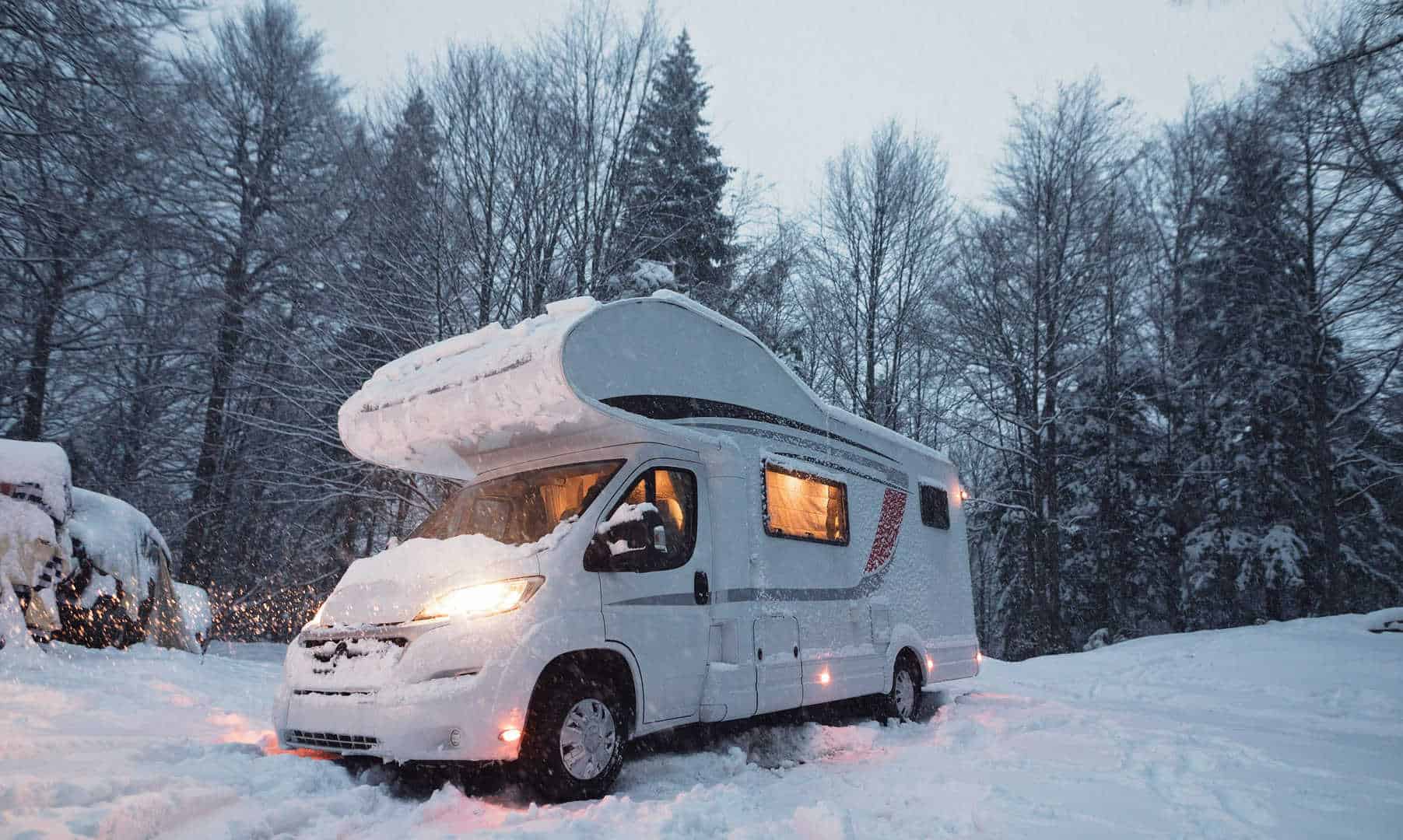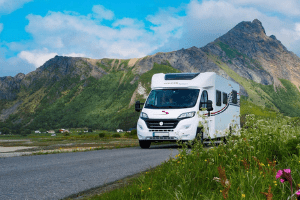The clocks have gone back and winter is on the way, which means it’s time to put the motorhome in mothballs – properly storing your motorhome during the winter months not only helps prolong its life by protecting it from the elements, it also helps for an easier getaway when spring finally rolls around.
Our motorhome winter storage tips guide will outline how to properly pack away for the winter and we’ll even include some tips on how to winterize a motorhome, for those who see winter as the ideal time to sample the great outdoors.
How to prepare your motorhome for winter storage
Having your motorhome in top condition when you put it into storage is the best way to make sure it’s good to go at the start of next season. Unfortunately, this means doing all those jobs that you’ve been putting off all summer – including a full service and a thorough cleaning – but it’s well worth the effort.
Having a full service before the winter means it has fresh oil and antifreeze, which will reduce the risk of internal corrosion and radiator blockage, while replacing the brake fluid will help to prevent corrosion of the brake cylinders (moisture in the old fluid can cause corrosion). It’s also worth adding winter concentration to the washer fluid bottle, which will help prevent frost damage.
With the service complete, it’s time to get to work on preparing the rest of your motorhome for winter.
Cleaning the outside of your motorhome for winter storage
Before you store your motorhome, it’s important to give it a thorough cleaning, both inside and out. Hose down the whole vehicle, including the underside, paying particular attention to the body seams and corners of the chassis. Let the vehicle dry before coating the bodywork with wax polish, which should be worked in thickly into the body joints to keep rain and moisture from settling in them. For more tips on how to give your vehicle a thorough going over, check out How To Clean Your Entire Motorhome
Then check underneath, paying attention to the chassis paint. If any areas are damaged, touch them up with a rust converter, primer and a final top coat of stone chip paint. It’s also worth coating the chassis with a layer of spray wax to protect it from damp and fix any leaks and corrosion before you pack up for the winter.
Cleaning the inside of your motorhome for winter storage
Thoroughly clean the inside of the motorhome, removing any food that could attract mice or rats, and leave the fridge door propped open to stop mould from forming. It’s also worth keeping open any base locker doors that have drop-out vents, as this keeps the air circulating and can help prevent mould and damp.
Damp can also affect upholstery, so keep all furnishings covered with a cotton sheet and consider placing moisture absorbing crystals in each section of the motorhome. Spray silicone oil onto locker hinges to stop them from rusting. Clean the toilet cassette with tank cleaner to remove limescale and odour, leave the valve open and spray the lip seal with lubricant to keep the rubber supple and stop it from sticking over the winter.
Parking your motorhome up for the winter
Before finally parking up, fill the fuel tank so there’s no room in the tank for condensation to build up, and increase the normal tyre pressure by 0.2 bar. Park on ground that is as firm and level as you can find and try to roll the motorhome to a stop without using the brakes. And make sure you leave the handbrake off and the engine in gear. If you’re parking on grass or any softer ground, place boards or slats under the tyres before placing chocks under the wheels and fitting any wheel clamps.
Once parked up, it’s worth fitting a breathable protective cover to protect the bodywork from rotting leaves, mould and algae.
If possible, try to give the motorhome a decent run out every month or so, to help air the vehicle, charge its batteries and stop mechanical components from seizing up.
How to winterize a motorhome
Not everyone wants to hibernate during the colder, darker months, if you’re planning on using your motorhome in winter, here’s how to make sure it’s ready for the worst the weather has to throw at it.
Making sure you’re warm enough is the key to comfortably living in a motorhome in the winter, and the age and type of motorhome you have will dictate the amount of work you have to do. If your motorhome had been built to Grade 3, this means it is insulated and heated to an internal temperature of 20°C, which can be sustained with external temperatures as low as -15°C.
In any case, you’ll need to prepare both the inside and outside to deal with the harsh winter conditions.
Getting your motorhome ready for winter camping
Keeping the water flowing is imperative when camping over winter, so make sure all external tanks and pipes are insulated to a sufficient standard to stop them from freezing up, this includes both fresh water and waste water tanks, and all connected pipes. If not already installed, it might be worth retro-fitting a tank heater, but bear in mind the amount of power these can use can make them unsustainable if you’re spending relatively long periods off-grid.
The next priority is making sure you’re warm enough. If you’ve not got an upgraded heating system it might be worth installing an extra electrical heater but, again, consider how much this can drain the battery.
If you’re out and about for the day, try to keep the heating on and set to around 10°˚C, and only use propane gas cylinders as these continue to operate to temperatures of -40°C, whereas butane cuts off as temperatures reach freezing point. If you have refillable cylinders, you can top these up with Autogas.
If it snows while you’re out and about, make sure any external air intakes and waste gas vents don’t get clogged up with snow.
Driving your motorhome in winter
Before you take your motorhome out for winter, make sure it has had a full winter service, all fluids have been sufficiently topped up with antifreeze or winter concentration, and winter tyres have been fitted and pumped to the correct pressure. Not only do winter tyres provide better grip in all conditions, not just snow and ice when it gets below 7°C, they’re also mandatory in some countries, so always check before travelling to the continent.
When driving in snow, ice or heavy rain, always reduce your speed accordingly and keep in mind the much longer braking distances. But remember, even if you take every possible precaution, accidents can still happen, so it’s important to make sure you’re fully insured.
Comfort insurance can make sure you have the right level of cover at the right price, whether you’re parked up for winter or braving the conditions. Our unrivalled choice of policies is what helps 95% of our customers rate our service as ‘Excellent’ on Trustpilot with a customer satisfaction score of 4.9 out of 5.*
Our motorhome insurance experts are on hand to find the best level of cover for all types of motorhome and all types of travellers. Call now on 0208 9840 666.
*October 2019













